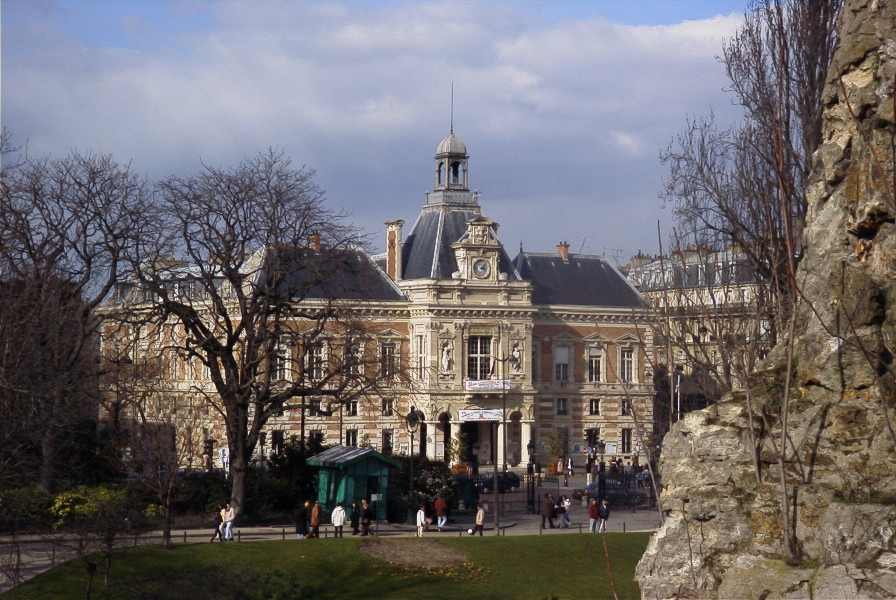

Dick started this sunny Sunday with a 2:45 run around Northeast Paris in preparation for his first Paris Marathon on April 9. (Next week is the 1/2 Marathon). The run went well including the traditional first 20 minutes to the top of Paris (Basilique du Sacré Coeur). Almost by accident, he wandered into the Parc des Buttes-Chaumont and talked Pietrina into coming back for a Sunday afternoon walk. Here's the pictures:
Millions of years ago the wandering Seine scooped out the bowl we now call Paris -- leaving a few nice-looking buttes around its edges. Natives use butte to describe a lonely hill with a little space at the top. Our most famous one (and a typical tourist stop) is called Butte Montmarte where Picasso, Einstein, and a few other notables stayed before it got discovered. (Long before they fled, Ignatius Loyola started an obscure religious order up there. It's been pretty much on the mountain top ever since). Here's a view of that Butte from Parc des Buttes-Chaumont. You can just make out the shining cathedral (Sacre Coeur is made of a type of limestone that whitens with age) at the center top of the picture between the apartment buildings in the middle ground.
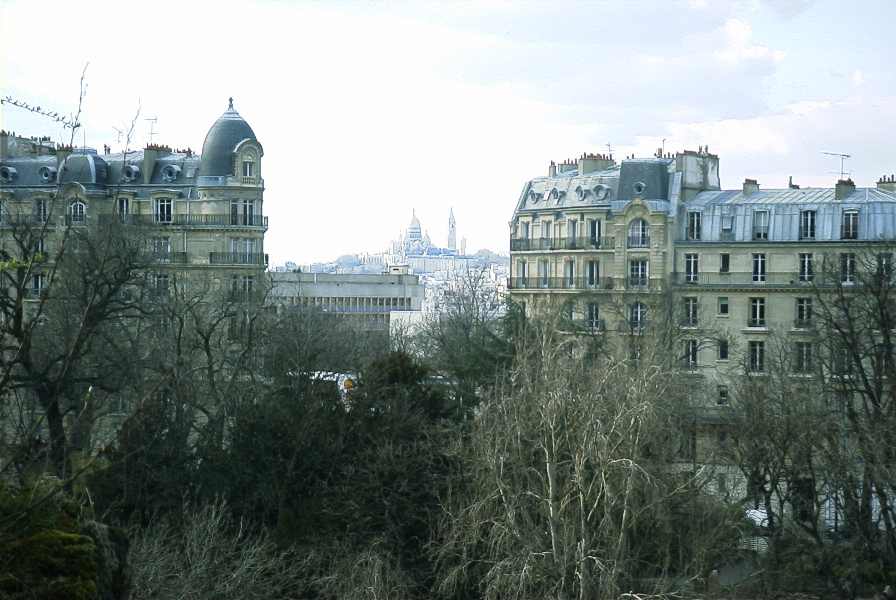
Here's another picture of it in the far background. This picture shows more of the Park we were in, the Parc des Buttes-Chaumont, with its little (3 acres) lake surrounding a "mountain."

This park is about 60 acres, making it one of the largest of the 420+ Paris parks within the city walls. (Our walls kept being rebuilt as the city grew until the last ones were torn down in 1919; today our edges are defined by a beltway called the Periphique). The 420 makes for a lot of parks for a town the size of Livonia or Canton Center, Michigan (about 11% of the city is park); but we don't typically have backyards to mow so the Detroit burbs probably use more fertilizer than Paris, even if we count what the dogs leave us each morning. Of course, at each edge of town outside the Periphique are two huge parks (Bois) that were once the King's hunting grounds.
After being the site of French battles with the Normans (885) and Prussians (1814), Parc des Buttes-Chaumont was a gypsum quarry. Napoleon III's great urban planner, Baron Von Haussmann, started building the park during the time of America's civil war. The old quarry was called Le monte chauve-- or shaven mountain since it had been pretty well denuded. (Losing your rocks does that to you.) Worse yet, the Parisians had been using it to dump their trash so it made even Frenchmen in summer smell good. And not just household trash either: Army deserters congregated here including the detritus of the French Foreign Legion.
Today the park is strangely landscaped with a lake fed from this waterfall (which, in turn, channels water from a nearby canal):

Here's a close-up of the troll who lives under the waterfall:
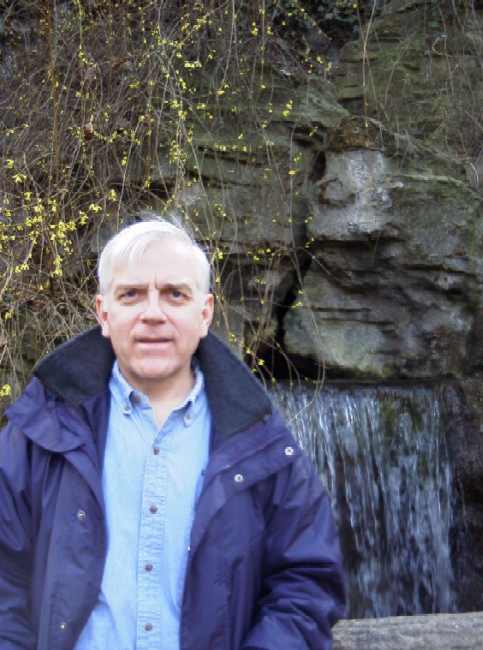
OK, Pietrina wanted pictures because of the 55 thing. I promise you won't see any more of me for a while.
The lake surrounds an island made of rocks 150 feet high. Atop is a temple (le temple de Sybille) which provides great views of Montmarte and some of the other high areas.

Here's another view of the temple which shows some of the tall trees which somehow escaped our storm of the last millenium last Christmas night.
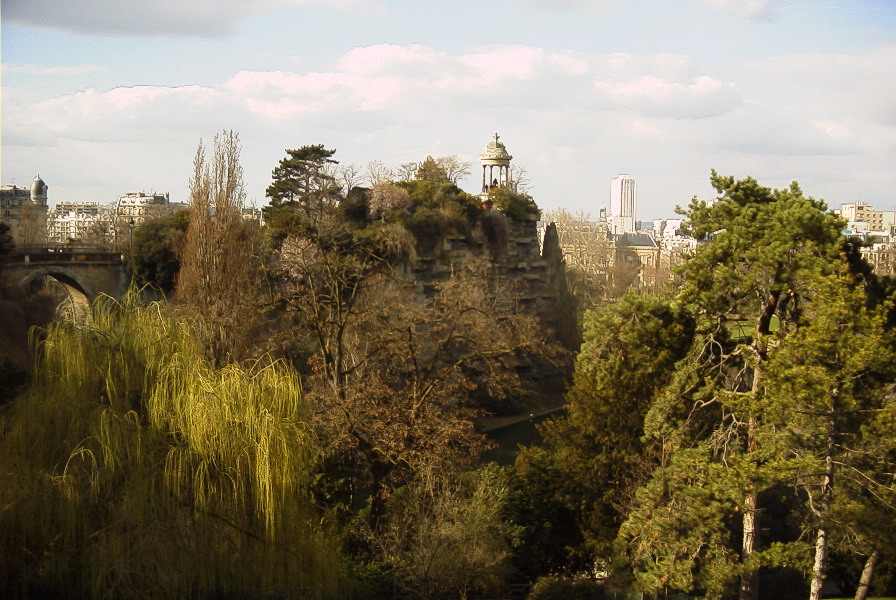
Perhaps the trees were spared by being in a huge valley carved out by the stones removed from the quarry.
The park is on the verge of Spring. Paris's many groundskeepers have prepared the beds and they await the bloom of flowers. In some cases, outside the beds, the grass bursts with blooms as this picture of the former president of the Mission Bend Garden Club shows...
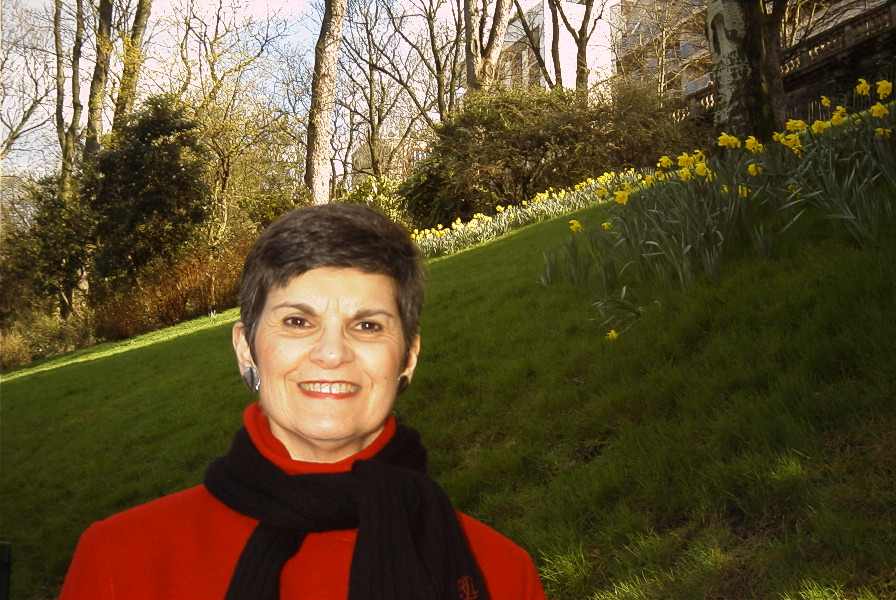
...as well as these photos of Crocuses, now quite common in Paris:

At the edge of the park is the city hall of the local ward (called arrondissement in Paris).
Here's a view from the park:

...and a little closer up to see the detail on this building.

Such distinctive civic buildings are quite typical of city government. The best of them is the city hall of the entire city, the Hotel de Ville. Someday we'll do a page just on that magnificent building.

In 2000 the park will begin an extensive restoration program. After 132+ years, the effects of water on the soft gypsum rock have eroded much. Hopefully most of Parc des Buttes-Chaumont will remain open so we can show our visitors this little jewel of Paris not often seen by tourists.
Where do you want to go today? Here's a few choices:
Pietrina and Dick's Home Page |